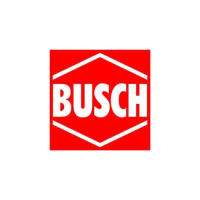Safety Notes
The compressor has been designed and manufactured according to
state-of-the-art methods. Nevertheless, residual risks may remain.
These operating instructions highlight potential hazards where appro
-
priate. Safety notes are tagged with one of the keywords DANGER,
WARNING and CAUTION as follows:
DANGER_a
Disregard of this safety note will always lead to accidents with fa
-
tal or serious injuries.
WARNING_a
Disregard of this safety note may lead to accidents with fatal or se-
rious injuries.
CAUTION_a
Disregard of this safety note may lead to accidents with minor inju-
ries or property damage.
Noise Emission
For the sound pressure level in free field according to EN ISO 2151
Ú page 15: Technical Data.
CAUTION_a4
The compressor emits noise of high intensity in a narrow band.
Risk of damage to the hearing.
Persons staying in the vicinity of a non noise insulated compressor
over extended periods shall wear ear protection.
Transport
Transport in Packaging
Packed on a pallet the compressor is to be transported with a forklift.
Transport without Packaging
In case the compressor is packed in a cardboard box with inflated
cushions:
◆ Remove the inflated cushions from the box
In case the compressor is in a cardboard box cushioned with rolled cor-
rugated cardboard:
◆ Remove the corrugated cardboard from the box
In case the compressor is laid in foam:
◆ Remove the foam
In case the compressor is bolted to a pallet or a base plate:
◆ Remove the bolting between the compressor and the pal-
let/base plate
In case the compressor is fastened to the pallet by means of tightening
straps:
◆
Remove the tightening straps
CAUTION_af
Do not walk, stand or work under suspended loads.
●
Attach lifting gear securely to the eyelets on the base frame
●
Attach another belt/rope as a protection against overturning to a
suitable point (eyebolt, drive motor flange etc.)
●
Attach the lifting gear to a crane hook with safety latch
●
Loosely hang the additional belt/rope into the crane hook
●
Lift the compressor with a crane
In case the compressor was bolted to a pallet or a base plate:
◆
Remove the stud bolts from the rubber feet
Storage
Short-term Storage
●
Make sure that the gas inlet and the pressure connection are
closed (leave the provided plugs in)
●
Store the compressor
–
if possible in original packaging,
–
indoors,
–
dry,
–
dust free and
–
vibration free
Conservation
In case of adverse ambient conditions (e.g. aggressive atmosphere, fre-
quent temperature changes) conserve the compressor immediately. In
case of favourable ambient conditions conserve the compressor if a
storage of more than 3 months is scheduled.
● Make sure that all ports are firmly closed; seal all ports that are not
sealed with PTFE-tape, gaskets or o-rings with adhesive tape
Note: VCI stands for “volatile corrosion inhibitor”. VCI-products (film,
paper, cardboard, foam) evaporate a substance that condenses in mo-
lecular thickness on the packed good and by its electro-chemical prop-
erties effectively suppresses corrosion on metallic surfaces. However,
VCI-products may attack the surfaces of plastics and elastomers. Seek
advice from your local packaging dealer! Busch uses CORTEC
VCI 126 R film for the overseas packaging of large equipment.
● Wrap the compressor in VCI film
● Store the compressor
–
if possible in original packing,
–
indoors,
–
dry,
–
dust free and
–
vibration free.
For commissioning after conservation:
● Make sure that all remains of adhesive tape are removed from the
ports
● Commission the compressor as described in the chapter Installation
and Commissioning (Ú page 4)
Installation and
Commissioning
Installation Prerequisites
CAUTION_a
In case of non-compliance with the installation prerequisites, partic
-
ularly in case of insufficient cooling:
Risk of damage or destruction of the compressor and adjoining plant
components!
Risk of injury!
The installation prerequisites must be complied with.
Transport MI 1502 BP
page 4 0870152627 / 101117

